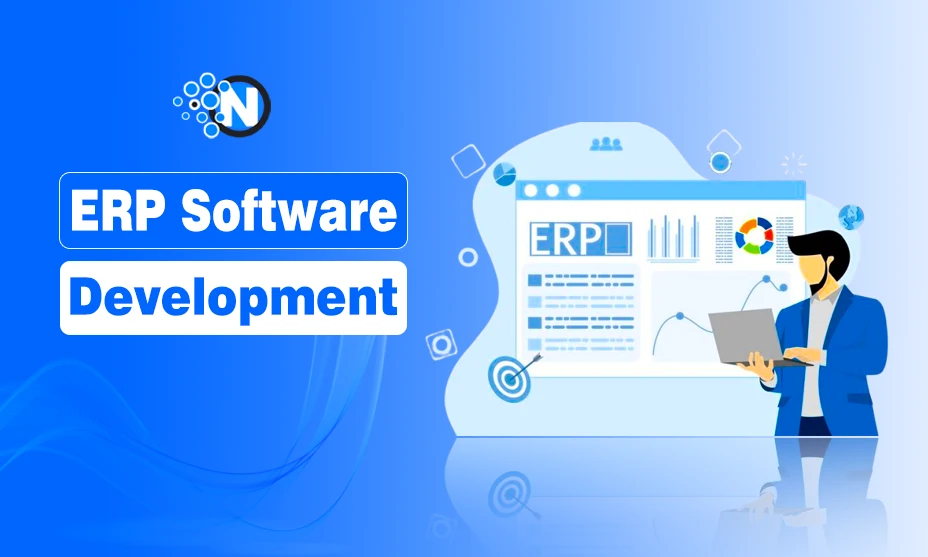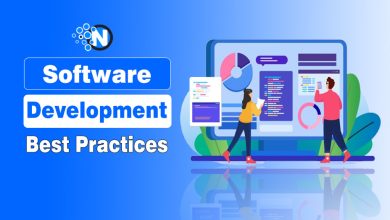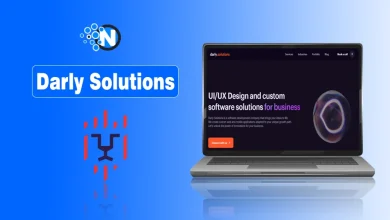A Comprehensive Guide to ERP Software Development

In fact, an effective ERP system is really helpful for any enterprise that wants to bring all its processes under one single umbrella. The ERP system integrates many business functions related to finance, supply chain, human resources, and sales on the same platform. The process of developing your ERP requires a lot of planning, technical knowledge, and a deep understanding of your business processes.
Here, we are going to provide all the development processes for an ERP application’s best practices and discuss practically everything connected with the development of ERP software.
Why Choose Custom ERP Development?
Such organizations probably can’t work well with off-the-shelf ERP solutions. Custom ERP development gives them flexibility and scalability for most specific needs. The customized ERP system allows:
- Automation of processes based on enterprise operations.
- Seamlessly integrate with your toolsets and platforms.
- Therefore, scalable infrastructure grows together with the company.
- Data centralization to facilitate informed decision-making.
In this way, the development of the ERP system gives full control over its features and aligns the system with a long-term strategy.
Basic Steps of ERP Application Development
ERP system development encompasses a lot of activities, from requirements gathering to deployment and maintenance. Following are all the major steps regarding how one can successfully build an ERP system.
1. Business Process Analysis and Requirement Gathering
Since every ERP is unique, the development process begins with an understanding of business needs. This covers:
- Prioritization of challenges and inefficiencies involving key stakeholders from various departments.
- Document existing workflows, indicating inefficiencies that represent opportunities for automation.
- Defining goals, such as decreasing operational costs, improving reporting, or automating supply chains.
- Prioritization of the features, i.e., must-haves versus nice-to-haves.
- Complete requirement documentation that would act as a blueprint during the development of ERP.
2. Choice of Technology Stack
The most important step in ERP application development is the selection of the right technology stack, which may affect system performance, scalability, and long-term maintenance. Consider the following technologies:
- Java, Python, or C#: for back-end development.
- Frontend: React.js or Angular with responsive dashboards.
- Database Systems: PostgreSQL, MySQL, or MongoDB.
- Cloud platforms: AWS or Microsoft Azure for SaaS ERP systems.
- Microservices, a module-based architecture example, indicates that an upgrade will be piecemeal in the future without affecting the whole system.
3. Designing ERP System Architecture
Further work development should be based on working out the system architecture and user interface. The major elements of the latter include:
- High-level architecture diagrams, mapping data flows across modules.
- Wireframes for UI depicting how the end-users will interact with the system.
- Perform RBAC design to give users access to relevant modules only.
- Prototyping lets stakeholders validate a design and provide feedback before actual development takes off.
4. Core Module Development
ERP systems contain different modules, each responsible for a certain function within the organization. Successive development of ERP is done through the development of these modules.
Typical ERP Modules:
- Tracks stock levels and automates reordering processes.
- Keeps personnel files and does recruiting and payroll.
- It enhances procurement and distribution processes.
- Maintains responsibility for payroll, accounts payable, and financial reporting.
- The company consolidates customer information from the hub’s sales and marketing groups.
Each module is developed independently, allowing phase deployment and easier troubleshooting.
5. Integration with other systems
This need to integrate third-party tools or legacy software with the ERP software development system is common in custom ERP development. Examples include:
- Accounting software package, for example, QuickBooks or Xero.
- CRM systems like Salesforce.
- E-commerce platforms, such as Shopify or Magento.
API connectivity from external platforms to seamless data interchanges across systems for a consistent user experience.
6. Testing and Quality Assurance
The system is put to rigorous testing to ensure that everything fits into place in every department. It includes:
- Unit Testing guarantees that a module performs a specific task.
- Integration testing interaction of modules among themselves.
- User Acceptance Testing feedback provided by the end-user about system usability.
- Performance testing ensures peak load management without any issues.
7. Deployment and Data Migration
Once the testing is complete, the ERP system is ready to go live. Deployment includes :
- Pilot testing provides for the release of the system to small-sized end users in order to find the outstanding issues.
- ERP system implementation should be done department by department so as not to disrupt things.
- Migrating data from legacy systems through cleaning it up first and putting it in the right format.
- Let tutorials and documentation guide the employees to get acquainted with the new system. Also, create backup systems so that there is no loss of data during migration.
8. Continuous Operation and Maintenance
Of course, ERP software development does not end with deployment. Continuous maintenance allows smooth operation and enables further improvements.
- Regular system monitoring for early detection of problems.
- Update when necessary
- Patch in order to maintain the system’s security and compliance up to date.
- Gather feedback from users regarding what should be improved.
- Add new modules or features based on emerging needs.
A good post-implementation support strategy will go a long way in ensuring relevance and effectiveness over a long period for your ERP system.
Best Practices of Successful ERP Development
Building in the following best practices can help your ERP development project go off without glitches and deliver value:
1. Adopt Agile Methodology
Develop iteratively to gather feedback continuously and hence produce quicker deliverables with Agile or Scrum methodologies.
2. Keep the User-Centered Design Approach
If employees find the system hard to work with, that may just lead to the failure of the ERP system. Design an intuitive UI that reduces learning curves, hence improving user adoption.
3. Allow for Scalability and Flexibility
When deploying your ERP system of record, choose a scalable architecture in addition to cloud architecture so that your ERP solution evolves with your company. This guarantees that significant transformations are not observed as the firm grows.
4. Security is a Must
As ERP systems manage sensitive business data, the incorporation of security measures becomes imperative. One way of restricting access is by making use of role-based access controls. Regular security audits detect vulnerabilities and allow for the needed addressing.
5. Involve Key Stakeholders Throughout the Process
Keep the heads of departments and end-users in constant communication throughout the development of the ERP. This solution will address business needs and thereby reduce friction to implementation.
Conclusion
ERP application development is a multi-step process which involves strategic planning and technical expertise together with cooperation at all levels. Consideration of the need to provide solid ground for long-term growth through developing an appropriate ERP system, from requirement analysis down to design, module integration, testing, and support post-deployment.
A customized ERP system automates processes and centralizes data to enhance competitiveness. Designed with agile development, security-first design, and user-centred interfaces, it provides long-term value and adapts to an organization’s needs.




